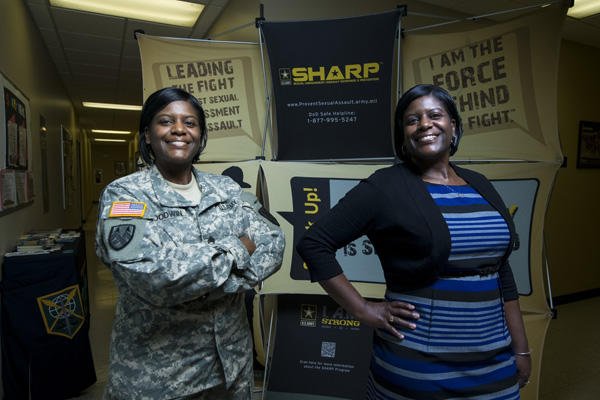Sharon, a recently retired Army veteran, tells this story about transition wardrobe:
When I left the Army, I had casual clothes and my uniform. As part of my job search, I knew I needed a professional wardrobe. I went to a local woman's clothing store and told the salesperson to set me up with a professional work wardrobe. That day, I left the store with several packages! I thought I was set.
I went on job interviews wearing those beautiful clothes. But they didn't feel like me. I dressed in the outfits exactly as the salesperson at the store had matched them up. Then, I secured a job and didn't feel confident wearing my outfits at the company. I felt like they were more of a costume rather than a wardrobe that felt like me.
Before my first day on the job, I went to another woman's store and picked out my own wardrobe: I chose four skirts (all black), two blazers (one black, one light gray), and four short sleeve dress blouses (two white, two ivory).
I felt more comfortable starting my new job in my new outfits. Things went well for a few weeks until one of my co-workers asked, "Are your black/gray/white suits your new uniform?" In a way, I'd reverted back to what I was most comfortable in -- a wardrobe that required very little consideration and effort in the morning as I got dressed.
With that in mind, I still wear my black and gray suits but now I add a necklace, scarf or pin to express some style. I'm a simple person, so the colors and lack of creativity suit me. But I don't want to be seen as "plain" or "boring," so I add some color to show my approachability.
I wish I'd had more guidance about what to wear when taking off my Army uniform and joining the civilian workforce.
What Sharon discovered upon leaving the military is that in the civilian workforce, there are options galore when it comes to wardrobe. Some women prefer pants, some dresses; others wear skirts and blouses; and other women aren't seen without a blazer on. While the choices are invigorating and exciting, the lack of uniform or consistency in wardrobe is a struggle for veterans, men and women alike.
Some guidelines for female veterans to consider when choosing your first post-military wardrobe:
1. Invest in Quality.
Choose fabrics and styles that are classic and will give you years of wear. Trendy clothing or items made from lower-quality materials will show their wear sooner, and they can impact your credibility.
2. Buy Foundational Pieces First.
Sharon was correct in investing in basic colors first. Black, navy, tan and white are great colors to build off of.
3. Add Color to Make a Statement About Your Brand and Personality.
Adding red, turquoise, yellow, orange and even dark pink jewelry, scarves or bracelets can bring interest and highlight your colorful personality, while the overall look remains professional.
4. Consider the Work Environment.
Some industries are traditionally more conservative while others are more creative and colorful. Know the company and work culture before investing in your wardrobe.
5. Fit in, but Stay Authentic.
Sharon would never be comfortable wearing a bright pink dress, but if she worked for a company that was more creative (think advertising or technology), she might add colorful accent pieces to brighten up her outfits. It is important that you don't try to change who you are to fit in. In her first shopping experience, Sharon tried to be the person the salesperson thought she was. She wasn't being authentic.
6. Consider the Work You'll Be Doing.
If your job entails sitting all day, walking through a construction site or meeting clients, consider how your wardrobe needs to adapt. While you'll want to be professional and appropriate, you also need to be comfortable. Walking through a construction site in high heels is never advisable.
Finding that first wardrobe after the military can be confusing. If you can enlist the support or help of a knowledgeable salesperson, great. Give them background on who you are, the career you're pursuing, what you're comfortable spending and what you need to feel good in the clothes.
For every suggestion or outfit the salesperson presents to you, ask yourself:
- Does this feel like me?
- Does this feel appropriate to the work I want to do?
- Can I build on this outfit over time?
Want to Know More About the Military?
Be sure to get the latest news about the U.S. military, as well as critical info about how to join and all the benefits of service. Subscribe to Military.com and receive customized updates delivered straight to your inbox.












